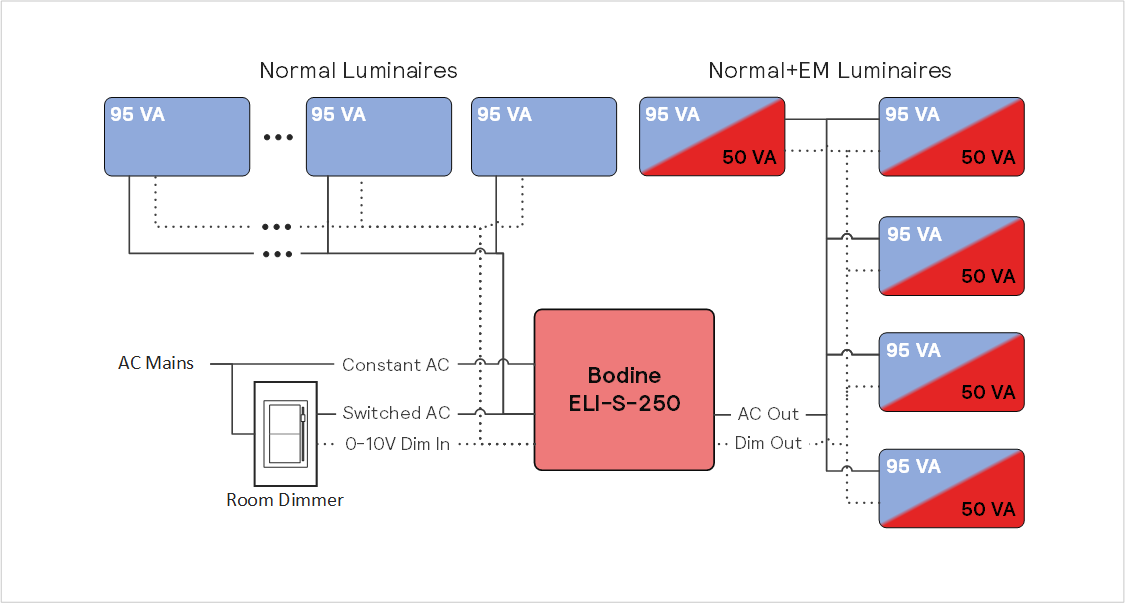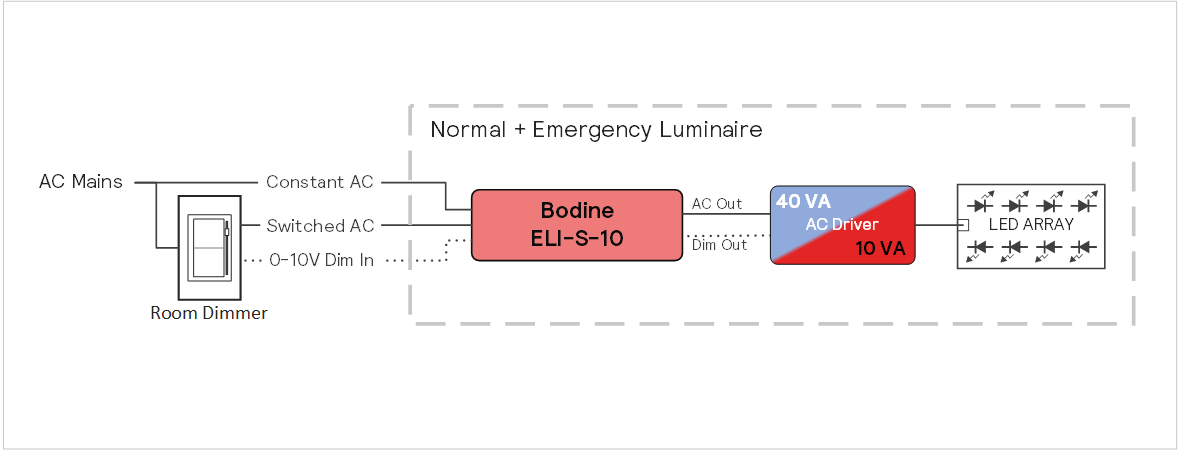



Lighting connected to an Auto-Dimming inverter can meet the code required emergency lighting illumination levels. As mentioned above, full power from the designated emergency luminaires is not necessary for virtually all applications. Applications vary, and the reduced light levels and illumination requirements of the environment must be considered though either the use of lighting design tools or direct measurement. Illumination requirements are generally an average of 1 foot-candle across the path of egress. Chicago requires a minimum of 1 foot-candle. Because local code can further vary, be sure to find your specific requirements. And, as always, call Bodine if you need assistance.
Good to know:
The see all Bodine inverters with Auto-Dim, please click here.